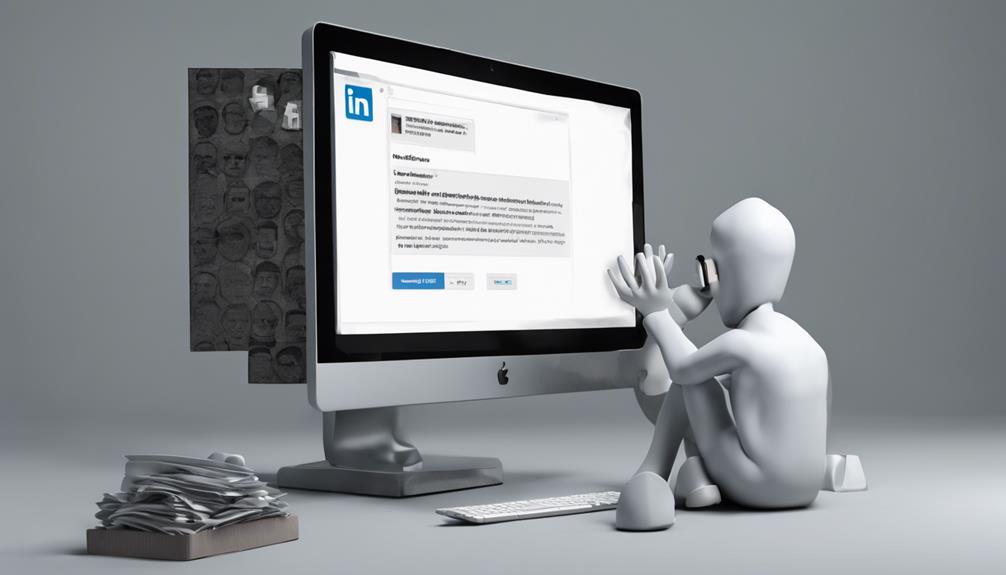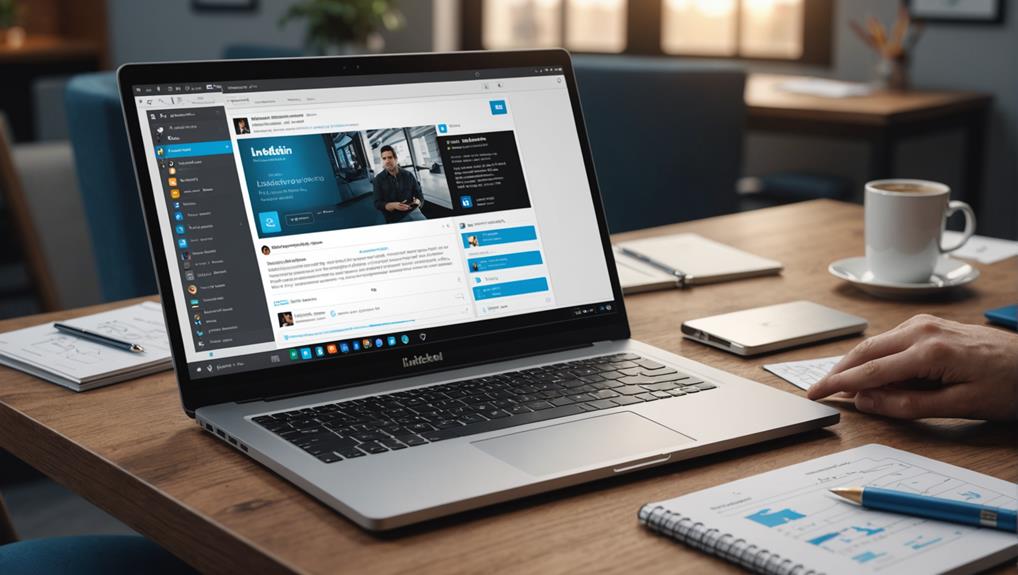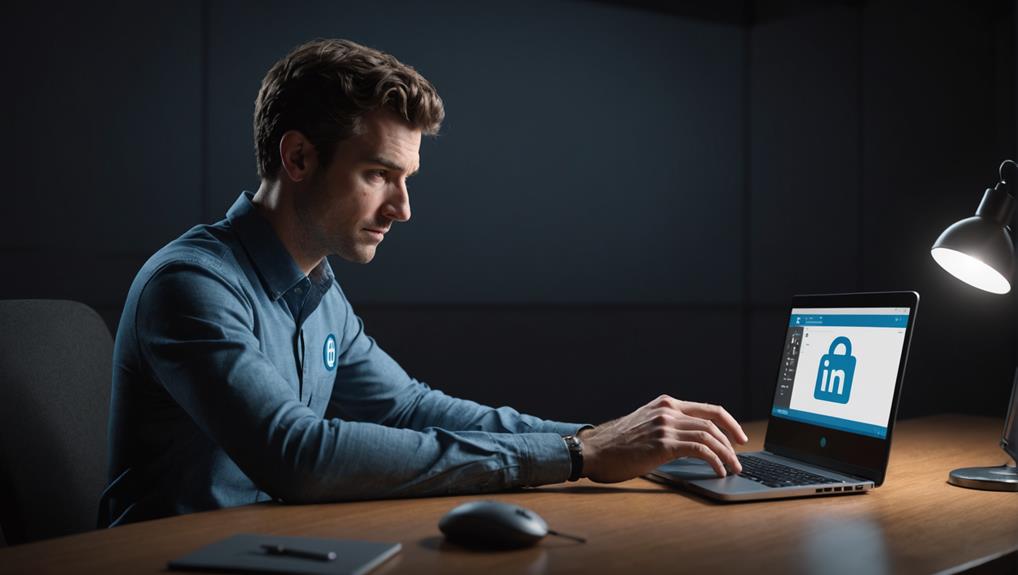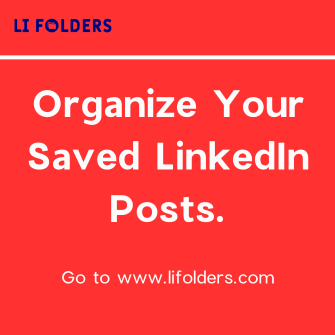
You can't permanently delete LinkedIn messages because the platform's design and data retention policies are geared towards maintaining a seamless professional communication flow. LinkedIn aims to foster ongoing engagements and meaningful interactions, thus messages are saved even after you've deleted them, serving both legal and recovery purposes. This setup helps ensure all your interactions are continuous and preserved, enhancing transparency within your professional network. By managing your messages through organization features like filters and folders, you stabilize your professional connections. Exploring further into LinkedIn's functionalities might provide you greater control over your messaging experience.
Understanding LinkedIn's Design

Exploring LinkedIn's design reveals a user-friendly interface focused on professional networking and communication. As you navigate through the platform, you'll notice how it encourages you to connect and engage with other professionals. It's built to make you feel part of a broader, interconnected community, where your voice matters and your professional identity can shine.
The layout is intuitive, letting you find features like messaging with ease. This design choice supports seamless interactions, ensuring that you're never more than a few clicks away from building potential partnerships or pursuing career opportunities. The platform's aesthetics are clean and professional, which mirrors the environment you'd want to present yourself in as a professional.
Moreover, LinkedIn's design subtly guides you to interact in ways that reflect your professional aspirations. Whether it's by joining groups that resonate with your industry, participating in discussions, or sharing insights on your feed, every element is there to help you carve out your unique space in the professional world. This sense of belonging, coupled with the opportunity to grow and network, underscores why LinkedIn has become such a pivotal tool in professional development and networking.
Data Retention Policies Explained
You should understand LinkedIn's data retention policies to know how long your data is stored and used on the platform. When you're part of this community, every piece of information you share has a lifecycle, managed meticulously to ensure both your safety and compliance with legal obligations.
Here's how it works: LinkedIn keeps your messages until you decide to clear your inbox by deleting them manually. However, even after deletion, your messages may remain on LinkedIn's servers for an additional period due to backup and legal purposes. This is common across many platforms, yet it's tailored here to respect both community standards and legal frameworks.
User Experience Considerations

While considering how LinkedIn manages your messages, it's crucial to consider user experience aspects that affect how easily and effectively you can interact with the platform. You're part of a community on LinkedIn, where every feature and function should help you feel connected and capable. Not being able to delete messages might initially seem restrictive, but it's vital to understand how this plays into the broader experience of networking and professional exchanges.
Imagine you're in a dynamic conversation with a potential employer or a new contact. The permanence of your messages ensures that you can always go back and review details, follow up on discussions, or clarify previous conversations. This feature supports a seamless flow of communication, fostering deeper connections and ongoing engagement without the fear of losing important interactions.
Also, consider how this impacts the trust and transparency within your network. Knowing that messages remain can encourage more thoughtful and meaningful exchanges, which are essential in building lasting professional relationships. You're not just sending messages; you're weaving a tapestry of connections that could support your career growth and open new opportunities. This design choice by LinkedIn emphasizes the importance of every interaction within your professional ecosystem.
Alternative Message Management Strategies
Consider implementing filters and folders to manage your LinkedIn messages more effectively. By organizing your inbox this way, you're not just keeping things tidy; you're also tailoring your networking experience to better suit your professional needs. It's like creating a personal space where every message feels relevant and purposeful.
You might also want to explore the tagging feature. It allows you to categorize messages by project, urgency, or any system that resonates with your workflow. Imagine being able to instantly access all communications related to a specific job application or business venture. It's about making sure you're on top of your game and never missing a beat.
Engaging with your network through thoughtful replies is another strategy. When you can't delete messages, sending a well-considered response can help you maintain meaningful connections. It shows you value the interaction and are actively managing your professional relationships.
Future Changes and User Feedback

LinkedIn's potential updates and user feedback mechanisms could significantly enhance message management features in the future. You've likely experienced the frustration of not being able to delete certain messages, leaving your inbox cluttered and your mind longing for a cleaner, more organized space. Imagine a LinkedIn where your feedback directly shapes the platform, creating a community-centric environment where your voice matters.
As part of this community, it's essential you're heard. LinkedIn is considering implementing enhanced feedback tools to ensure they capture your insights and preferences. You'd have the power to suggest changes, report issues, and influence future updates. This isn't just about improving message deletion; it's about fostering a sense of belonging and participation in the platform's evolution.
Conclusion
You might find it frustrating that you can't delete LinkedIn messages, but it's largely due to the platform's design focused on professional networking and data retention policies. However, you can manage your messages by archiving or organizing them differently. Keep an eye out for any updates, as LinkedIn could change these features based on user feedback. Remember, your voice is crucial in shaping how these tools evolve, so don't hesitate to share your thoughts with LinkedIn!






